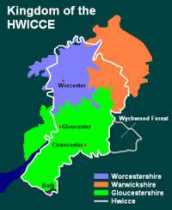
Among the chattering classes on both the Left and the Right, it's become fashionable to decry what they call “Tribalism,” meaning solipsistic hyper-partisanship.
You'll notice that none of those doing the decrying actually belong to a tribe.
Those of us who do know that, in fact, they're wrong.
Tribalism is not the problem. Tribalism is the answer.
It's the lack of true tribe that is the problem.
Human beings are tribal animals. We're born with a need to belong: to be part of the life of an ongoing people, a group larger than a family but smaller than a nation. This provides us with a sense of belonging that nothing else can satisfy.
Since the longing to belong is inherent, when we don't have it, we seek it out. The tribe-substitutes that we end up with instead are all too often either something destructive—like a gang, or the Party—or something ephemeral and utterly trivial, like the Game, or the Concert.
Pagans, I would contend, are an emergent tribe, at least in potentia. Thou mayst not be a pagan alone. All pagan religions are tribal religions: they come with an inherent affiliation to a particular people. A paganism without a people is an incomplete paganism.





















